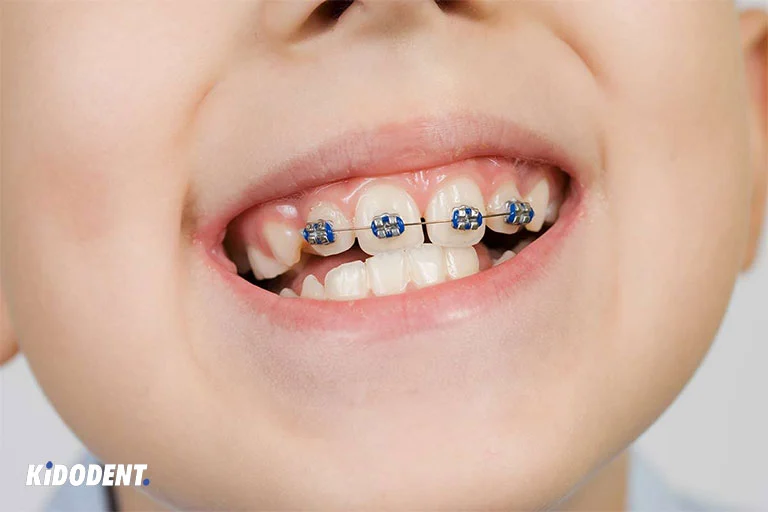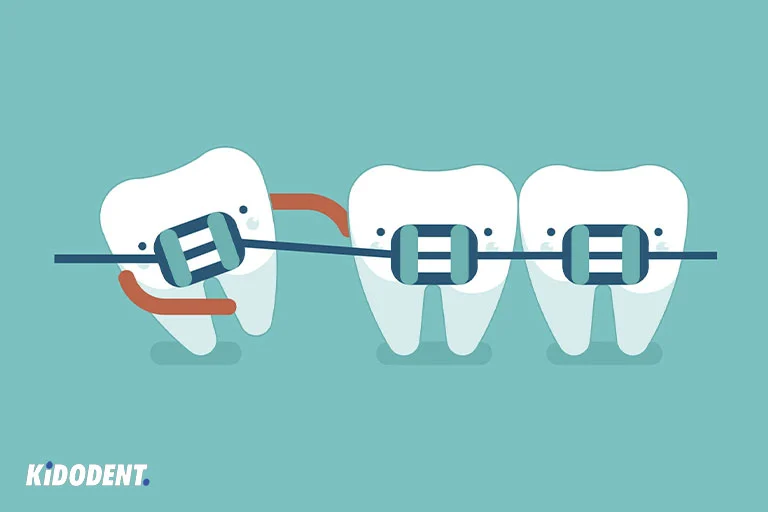When parents are looking for orthodontic treatment for their children, their goal is certainly rooted in some future situations. Social acceptance and job opportunities are some of the parents’ concerns. In this article, you will read about the importance of children’s orthodontics and the dental problems that can be treated to give your loved ones a perfect smile appearance.
Why should we pay attention to children orthodontics?
The most important point of early orthodontics is preventing much worse future conditions.
Children may have some problems with their teeth. Children are growing, so are their facial and oral structures. In some severe forms, orthodontic treatment is really necessary because of high risks like functional deficits. Eating disorders, malnutrition and vitamin deficiency are just some problems that can happen.
Orthodontic treatment should never be neglected as most of the problems related to orthodontics can’t be self-corrected.
Who needs orthodontics?
This is a good question since people are wondering whether children orthodontics treatment for any age not just children sounds reasonable or not. If there are any dental malocclusion (irregularity) that has affected our health and appearance, problems will follow one after another.
Generally we need to seek an orthodontist for these situations below:
- Facial problem: it can affect the child’s self-esteem and even leads to social problems. Therefore, orthodontics can treat asymmetry of the face.
- Functional problems: imagine if there is pain or deformities in jaw that can impact moving the jaws. These problems lead to difficulties in swallowing, speaking and chewing.
- Malocclusion in teeth: malocclusion results in plenty more problems and increase the risks of trauma, gum disease and tooth decay.

How does orthodontics work?
It is interesting to know that orthodontics, like all other professions, has its instruments that can help us to have a better condition for the teeth and jaws. Generally, these orthodontic appliances and instruments are helpful in improving the well-being of our appearance.
Using different degrees of forces and application of this force is a key basic of orthodontic job. We can categorize these orthodontic techniques as the following ways:
- To direct the teeth to the best position and help in the correction of aligned teeth.
- The application of different appliances and techniques to change the model of the bones to direct the desired form.
- Changing the path of growth since this is crucial in having the perfect teeth and jawbones. For example, orthodontics is vital before the dentofacial (dental and facial) maturity of the muscles and bones as in children.
Orthodontic treatment and managing important problems
Orthodontic treatments depend on the kind of malocclusions. Pediatric dentists can detect the problem very early on. They can refer you to the orthodontists or any other dental specialists depending on the type of problem.
Knowing about the dental problems in our child early in their life can be beneficial. It can prevent the problems from becoming worse and challenging later in the adulthood.
Below are just some of the problems that orthodontic treatments and management should be considered:
- Overcrowded teeth: extra number of teeth causes a lot of irregularity of teeth or occlusal problems. The early orthodontic treatment can be a crucial preventive strategy for the wellbeing of children in the later ages.
Children with overcrowded teeth experience permanent teeth eruption problems. Orthodontists use appliances to make it easy for permanent teeth to erupt.
In case of extraction of a tooth, orthodontic space management of missing teeth is necessary. It maintains the space for the teeth to erupt, which is an important orthodontic treatment goal.
- Anterior crossbite: this kind of malocclusion can be skeletal because of overgrown lower (mandibular) jaw and abnormality in the upper jaw. It can also be just because of dental displacement. For example, in dental problem because of one or some teeth in this condition, upper jaw central and lateral incisors are involved.
In the skeletal condition, treatment of the position of incisor teeth is not enough.
Now you know how important it is to visit a dental specialist to get the best results.
- Posterior crossbite: our upper teeth in the back go toward and inside the lower arch back teeth.
It can be dental and skeletal malocclusion. The narrow maxilla can cause the skeletal problem of this condition or it can be a dental problem because of lingual tipping of the upper teeth.
Parents should know that finger-sucking habits for a long period of time is one of the main factors in causing this condition
- Hypodontia (congenital absence of teeth) or missing teeth: hypodontia can be treated with orthodontic treatment along with other dental treatments like implant.
Even one missing teeth can have future outcomes. For example, if a one lateral incisor tooth in the upper jaw (maxilla) is missing, it results in space for midline diastema (the appearance of gap between two central upper teeth).
- Open bite: when the mouth is closed, there is no contact between upper front teeth and lower teeth.
Finger sucking in children is the main cause of this challenging condition for the orthodontists.
The destructive finger-sucking force causes protrusion (sticking out) of teeth. Sucking finger can impact child’s dentoalvelor (the teeth and the alveolar bone that surrounds the teeth). Therefore, open bite occurs.
- Deep bite: deep bite can be defined as when the upper front teeth bite over the lower teeth and the there is an excessive overlap of upper front teeth over the lower front teeth.
Deep bite can impact the facial symmetry of the child. Orthodontic treatment can improve in how the children’s face change positively.
- All other dental and jaw malocclusions that are caused by bad habits like bruxism, finger sucking, chewing with one side of mouth(unilateral chewing), tongue thrust habits and mouth breathing should be detected and treated with necessary children orthodontics appliance and treatments.

children orthodontics treatment appliance
The list of children orthodontics appliances for variety of treatments of dental, jaw and facial problems is full of creative devices developed during the history of orthodontics.
These orthodontic appliances are for the purpose of treatment ways like space management, expanding appliances, functional appliances and more detailed techniques of orthodontic treatments.
Some of these orthodontic appliances are as follow:
- W-arch and Quad helix are those appliances for the treatment of posterior cross bite which we explained above.
- Upper jaw (maxillary) lingual arch with finger springs and fixed (banded and bonded) appliances or removable appliances are treatment ways for anterior crossbite or other deformities.
- Frankel functional regulator is one of the orthodontic appliances that can be used to treat plenty of dental and jaw problems including open bite.
- Orthodontic arch wires or orthodontic braces are some solutions for the treatment of deep bite.
- Appliance like elastics, lip bumpers, headgear, Herbst, bionator and bite plate are just some appliances that are practical in reducing the problems like overbite, or generally bite disorders and also changes in growth of the upper or lower jaw in necessary cases.
- Orthodontic appliances like Hyrax and traspalatal arch bars are some effective expanding appliances in orthodontics.
